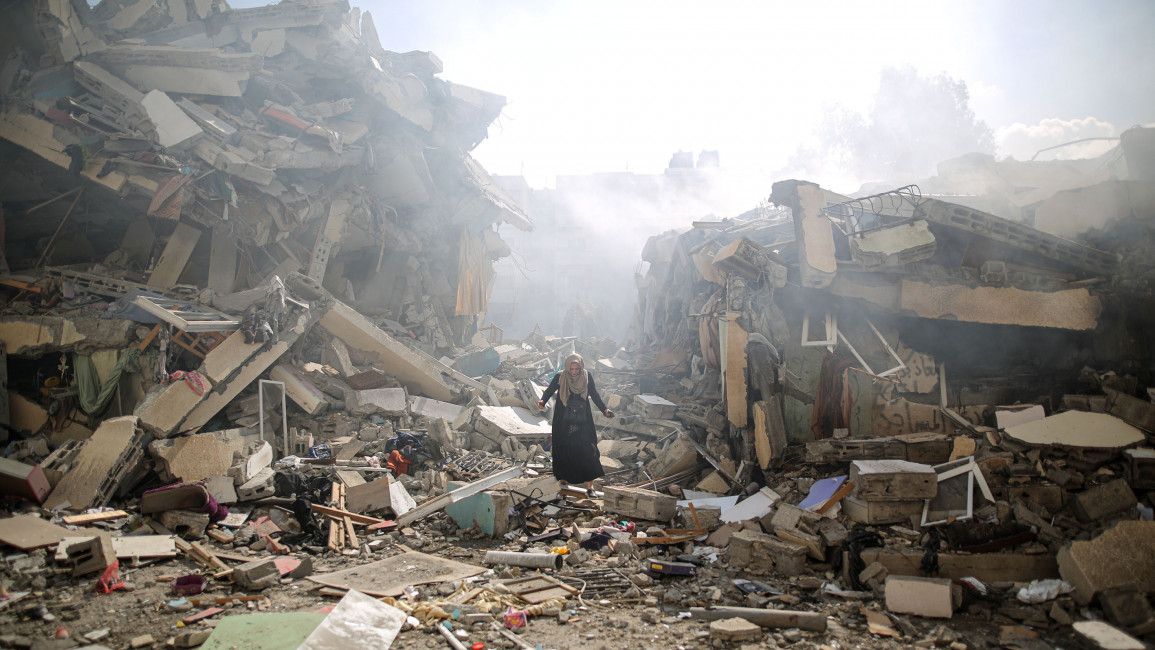
How the war on Gaza is damaging Israel's economy

Following Hamas’ attack on 7 October, and after several weeks of deadly airstrikes and maritime bombardments, the Israeli army launched a ground war in Gaza.
Israel has vowed to destroy Hamas and has so far killed at least 13,000 Palestinians, including over 5,500 children, while destroying or damaging up to 51.4 % of buildings in northern Gaza.
But this devastating response, and the likely protracted nature of military operations, has taken a dramatic economic toll, raising the spectre of a systemic risk to Israel as businesses are upended, commerce has slowed, and flights to the country have been cancelled, with tourism also coming to a halt.
With the outcome and length of the war as yet unknown, and the war on Gaza costing Israel $260 million a day, there is much economic, and political, uncertainty on the horizon.
"The army has summoned 360,000 additional reservists, around 8% of Israel's workforce, for the war on Gaza"
Labour shortages
On the production side of Israel's economy, there has been a dramatic supply shock to the labour market, mainly due to increasingly severe restrictions on the availability and mobility of employees.
The army has summoned 360,000 additional reservists, around 8% of Israel’s workforce, for the war on Gaza to add to its active military force of 150,000, one of the largest military mobilisations in the region's history.
Since military service is still compulsory for Israelis aged 18 and over, thousands of workers are leaving their usual jobs to join the front lines, as in the case of the 252nd Sinai Division, where a 120% reservist turnout rate has been reported by the Israeli army.
Even if the National Insurance Institute reimburses employers for the benefits paid to employees called up to the reserves, the employers’ charge remains equal to the opportunity cost of workers’ direct contribution to production and decreasing labour productivity.
Furthermore, Israel's war has resulted in the absence, and less efficient remote work, of approximately 520,000 working parents, with the full or partial closure of the education system and an absence of 144,000 workers who were residents of evacuated or cleared areas, largely in the north and south of Israel.
As a result, the Bank of Israel estimates the weekly cost of employee absences during the first five weeks of the Gaza war to be 6% of the weekly Gross Domestic Product (GDP).
Nevertheless, this number does not reflect the overall adverse impact on the supply side of the labour market, because it only refers to Israeli workers and does not include costs derived from Palestinian and foreign worker absences.
|
|
Indeed, barriers to the entry of more than 164,000 Palestinian employees in Israel and Israeli settlements are likely to reduce productivity in the agriculture and real estate construction sectors among others.
For instance, the Israeli agriculture sector is lacking at least 15,000 Palestinian and foreign labourers, since Palestinian workers have been banned or expelled. Alongside this, there have been mass departures from Israel of the 16.2% of the labour force made up of immigrants and foreign workers.
The extent and the persistence of these labour shortages depend on the scale and length of military operations, but Israel’s economy currently operates and will continue to operate below its potential real GDP.
"The war on Gaza is costing Israel $260 million a day"
Drop in demand, consumption
On the aggregate demand side, an external shock is hurting the absorption of domestic and imported production. This has manifested in a depression in private consumption of goods and services, coupled with a reduction in household disposable income.
This decline in consumption has been exacerbated by persistent inflationary pressures in Israel and is amplified by the unprecedented acceleration in the depreciation of the Shekel/US Dollar exchange rate observed since 9 October.
According to reports in late October, the shekel reached a 14-year low. Around the same time, Fitch Ratings, Moody’s Investors Service and S&P warned that any escalation in the conflict could result in Israel’s sovereign debt rating being downgraded.
What is more, the risk premiums embedded in interest rates on the bond market are beginning to reflect the climate of uncertainty prevailing in the region. This could lead to stagnation in investment, mainly due to the increase in the cost of capital, falling productivity, and supply chain disturbances.
In addition to labour shortages and a decline in services and consumption, Israel’s tech sector has been particularly impacted. According to economists, 10% of Israeli employees work in the high-tech sector but they are responsible for 50% of the country’s exports. Many of the reservists called up for duty are young, educated, and productive.
From this perspective, the drop in private demand could be offset by a compensatory increase in public spending. While a fiscal stimulus package may support Israel's macroeconomic balances, it will depend on the length of the war.
Israel’s Finance Ministry Bezalel Smotrich, who is set to announce a new budget, presented an economic plan last month that included $1 billion in grants to affected businesses, but there have also been demands to redirect funds from ultra-Orthodox and pro-settler parties.
In the May budget this year for 2023 and 2024, around $4 billion was allocated in discretionary funds to ultra-Orthodox and pro-settler parties, including increased stipends for ultra-Orthodox men to study instead of work or serve in the military.
Also, the effect of a likely increase in the military budget must be treated according to its distribution between current operating expenditures and investment expenses in the acquisition of weapons and equipment.
This is in addition to public spending on rehabilitation, aid, and subsidies to companies and to households as a whole. With a fiscal space likely to be given to Israel’s war, Israel's public debt could be relatively swollen.
In short, the double economic shock on supply and demand could become an unprecedented macroeconomic crisis for Israel, with some Israeli economists estimating the accumulated cost to be 10% of GDP if the war lasts for a year.
Earlier this month, Israel’s central bank governor said the war was a “major shock” to the economy and more expensive than estimated.
With Israel’s political leaders still unclear about their objectives or the length of the conflict, the economic fallout could have serious short and long-term repercussions.
Hachimi Alaoui is an economist and writer from Morocco.
Follow him on Twitter: @Hachimialaoui23




